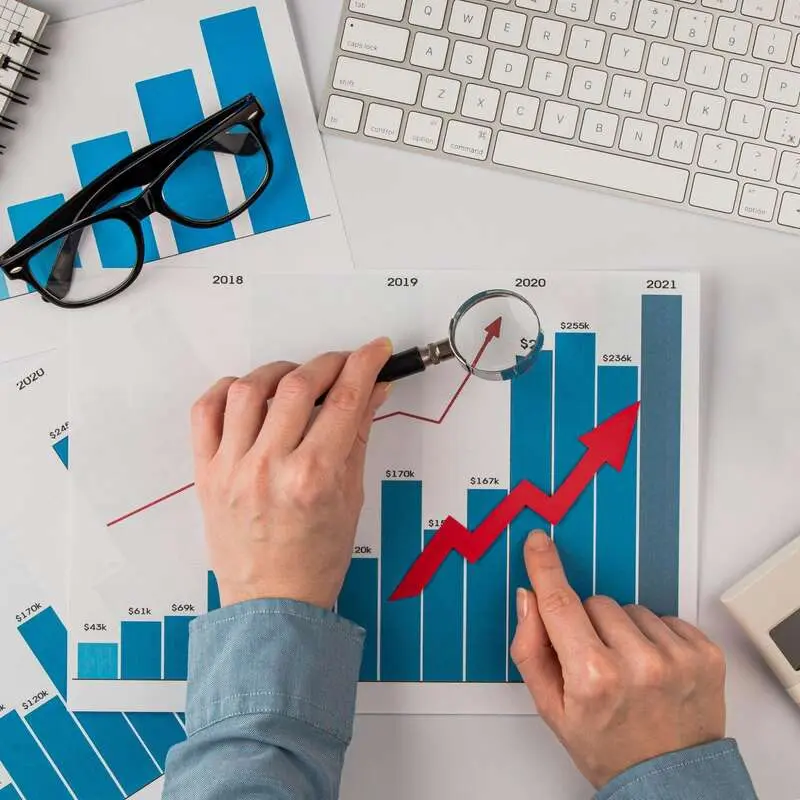Inflation poses a serious challenge for businesses across various sectors. In a situation where prices keep rising, maintaining the stability and sustainability of business capital is crucial.
Also Read: Apply for a Loan Through BFI Finance Now!
1. Causes of Inflation
1.1 Reduced Purchasing Power
Various factors can trigger inflation, and one of them is the reduced purchasing power of the public. When the income of the public increases, they have more money to spend. However, if the growth in the supply of goods and services does not align with the increased purchasing power, excessive demand can lead to price hikes. This phenomenon usually occurs when the public has high expectations for economic growth and higher income.
1.2 Higher Interest Rates
An increase in interest rates by the central bank can also trigger inflation. Higher interest rates result in a decrease in the amount of money circulating in the market. This is due to a lack of loans and investments as borrowing costs become more expensive. While this liquidity constraint can hinder economic growth, it can simultaneously help prevent excessive inflation.
1.3 Currency Devaluation
Currency devaluation, or the depreciation of the national currency, can be a significant factor in triggering inflation. When the value of the currency declines, imported goods become more expensive, causing domestic prices to rise. This factor is closely related to monetary policy and the stability of the national currency.
1.4 Slowed Economic Growth
Slowed economic growth can put pressure on inflation rates. Imbalances between production and demand can lead to price increases, especially if the supply of goods and services cannot meet consumer needs. This often occurs in situations where investments and production experience stagnation, creating an economically unstable environment.
2. Types of Inflation
2.1 Based on Severity
- Mild: Characterized by limited price increases in a few goods and services. While relatively manageable, mild inflation can signal early changes in the larger economic landscape.
- Moderate: At this level, price increases are more widespread across various economic sectors. Although not as severe as hyperinflation, the impacts of moderate inflation can significantly affect daily lives, influencing the purchasing power of the public.
- Hyperinflation: An extreme level of inflation where prices skyrocket rapidly, and the currency experiences a drastic devaluation. This condition can lead to economic chaos, erode savings, and harm business and financial activities.
2.2 Based on Origin
- Demand-Pull Inflation: Occurs due to an increase in demand surpassing the supply of goods and services in the market. It can result from the rising purchasing power of the public or economic stimulus policies. Demand-pull inflation can create imbalances between supply and demand, driving price increases.
- Cost-Push Inflation: Arises when the production costs of goods or services increase, and producers decide to pass on these cost increases to consumers. Factors such as rising raw material prices, employee wages, or other production costs can drive cost-push inflation.
- A deep understanding of these types of inflation is essential for businesses to take appropriate actions in managing the impact of inflation on their operations and business strategies. By identifying potential inflation types, companies can design precise measures to maintain stability amid the fluctuating economic dynamics.
3. Secure Business Tips During Inflation

3.1 Boost Productivity
In the face of inflation, increasing productivity is a necessity for businesses aiming to remain competitive. This can be implemented through the introduction of new technologies that enhance production efficiency, providing relevant training to employees, and optimizing the entire production process. This way, companies can not only withstand the pressure of rising production costs but also maintain their competitiveness in a continually changing market due to economic shifts.
Also Read: Recognize the Essential Terms You Must Know When Starting a Business!
3.2 Trim Unnecessary Costs
In managing businesses during inflation, evaluating operational costs is a crucial step. Identify areas where cost reduction can be made without sacrificing the quality of products or services. Trimming unnecessary costs may involve leveraging more efficient technologies, operational restructuring, or even renegotiating contracts with suppliers. This step helps companies maintain profitability even when faced with inflationary pressures.
3.3 Evaluate Financial Flows
Continuous monitoring and evaluation of the company's financial flows become highly important. Balancing receipts, expenditures, and investments is key to success amid changing economic conditions. A careful analysis of financial statements and profit and loss reports can help identify areas that require adjustment. With a deep understanding of financial flows, companies can devise the right strategies to maintain financial stability.
3.4 Introduce New Menus
In the service and product sectors, innovation through the launch of new variants or quality enhancements can be an effective strategy to respond to inflation. While prices may experience increases, adding value to products or services can make customers more accepting of these price adjustments. Product innovation helps companies remain attractive to consumers, even in challenging economic conditions.
3.5 Reinforce Marketing Strategies
Strengthen marketing strategies to remain competitive in a market influenced by inflation. Identify market trends and needs, and adjust marketing strategies accordingly. Adding value to products or services, customer loyalty programs, or special promotions can be effective tools in retaining and attracting new customers amid economic uncertainty. A robust marketing strategy helps companies stay relevant and offset the negative impacts of inflation with a more positive approach.
Facing inflation requires a combination of a deep understanding of its causes and types, along with intelligent business strategies. Entrepreneurs need to adapt to economic changes and continuously seek ways to improve efficiency, reduce costs, and enhance competitiveness. By implementing the right tips and strategies, entrepreneurs can keep their capital intact amid potential inflation challenges. Innovation and creativity in managing businesses will be the key to success in navigating economic fluctuations and maintaining the sustainability of your business.
BFI Finance is a company that provides multi-purpose loans with guarantees for motorbike bpkb, car bpkb, and house or shophouse certificates







